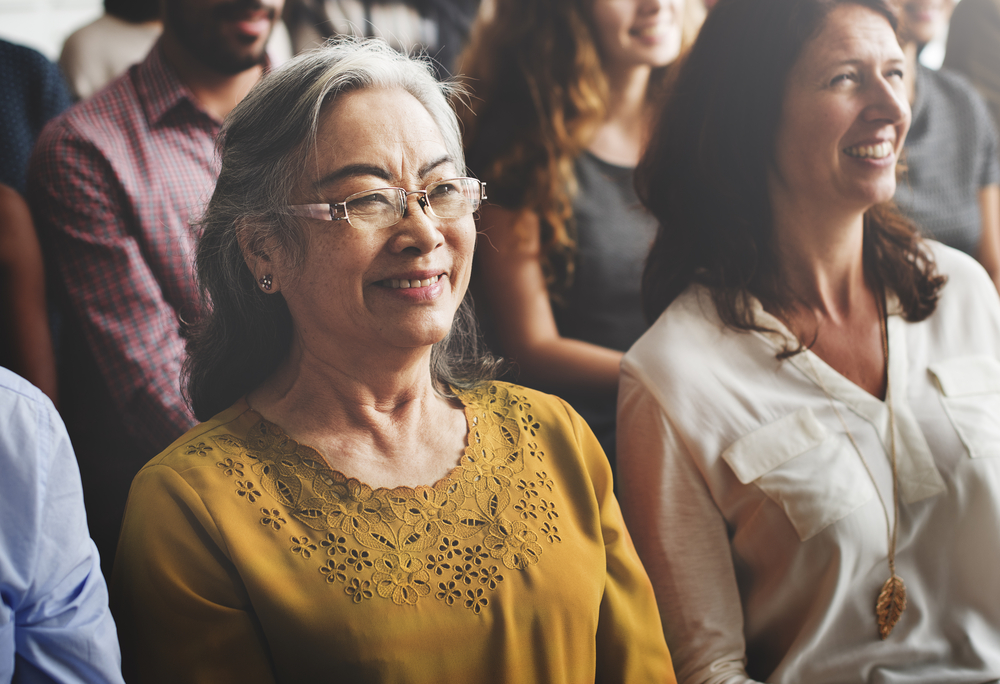A recent survey from SheKnows confirms what many of us already know: Feminism is not very inclusive.
According to #TheFWord: A Study on Feminism, a research study conducted by SheKnows about the relationships female-identifying people have with feminism, women ages 30-54 and women of color are much less likely to self-identify as feminists. There are various possible reasons for this, but they all mostly point to one conclusions: These groups of women do not believe that feminism represents them.
Feminism, at the very least, is the advocacy of women’s rights to be equal to men. So why are there women who feel that this advocacy doesn’t apply to them? Well, young, white, higher income women dominate much of the mainstream conversation about feminism. When these are the voices speaking for a movement, it’s easy to feel that they represent it in its entirety.
But, feminism is a movement for all women, and so it’s important to advocate for intersectional feminism. Intersectionality refers to the recognition of “multiple aspects of identity that enrich our lives and experiences and that compound and complicate oppressions and marginalizations,” according to Everyday Feminism. Basically, this means that we as feminists must acknowledge and work to represent all types of identities, including people of all ages, races, ethnicities, gender identities, and body capabilities.
Are you looking for ways to make feminism more inclusive? Here are a few tips.
1. Decenter Your Perspective From Yourself
When fighting for feminism, it’s easy to focus on yourself and your own position in the world. But it’s important to remember and recognize the countless other experiences that encompass womanhood.
There are trans women, and women of color, middle-aged women, and women of many other identities who experience feminism (or a lack thereof) completely differently from cis, white, young women. The first step in including everyone in the movement is to acknowledge differences among the people who are a part of it.
2. Collectively Share Power
Once you acknowledge the many different identities involved, the next step is make room for those many identities within the conversations and actions being taken. And, inclusion alone is not enough. We need to also make sure that everyone is valued within these conversations and actions.
3. Honor Differences and Find Ways They Can All Be Served
Including people does not mean pretending that the differences don’t matter. Instead, it’s important to allow space for those differences and to find the best ways to serve them. Be aware of differences in language for different people; for example, some women prefer to use different pronouns rather than traditional feminine ones like she and her. Be aware of how a working 40-year-old mother is fighting for different specific issues than a 22-year-old recent college graduate, but both are equally valid and worth fighting for as part of a feminist movement. Be aware of how a woman of color might be fighting issues of racism in addition to issues of sexism, additional issues that might not be a part of a white woman’s fight.
An inclusive feminist space allows room for and honors the varying needs of different individuals. Equality doesn’t mean everyone is treated exactly the same; it means everyone is treated with the respect and dignity they deserve as an individual.
It can be a bit overwhelming to first take steps to become more inclusive and practice intersectionality, but the most important thing is to be open to learning and respectful of people’s different needs. By doing so, we can work to create a movement that truly achieves equality across the board.
For further reading, check out:
- “New survey on feminism spotlights issues of exclusion,” from The New York Times “Women in the World”
- “5 Reasons Intersectionality Matters, Because Feminism Cannot be Inclusive Without It,” from Bustle
- “4 Things We Can Do to Make Feminist Organizing More Inclusive and Empowering for All of Us,” from Everyday Feminism




comments